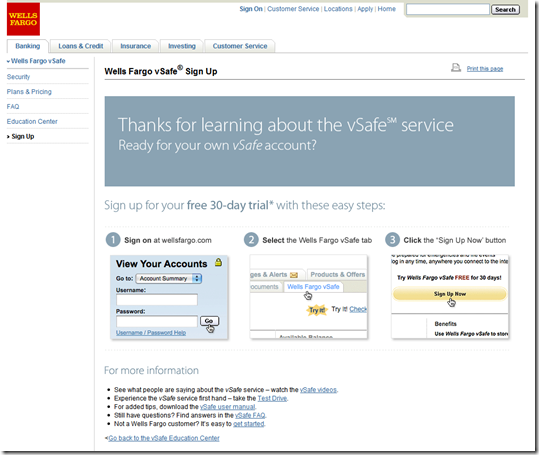 We are always on the lookout for examples of U.S. financial institutions charging fees for value-added services online (see note 1). In the past seven or eight years, the sightings have been rare.
We are always on the lookout for examples of U.S. financial institutions charging fees for value-added services online (see note 1). In the past seven or eight years, the sightings have been rare.
But today, we have a great one. And like most brilliant ideas, it seems pretty obvious in retrospect. The new service from Mercantile Bank of Michigan is called Funds Manager (PDF FAQs here) and it’s not only a great service innovation, but also promises to bring fees back to online banking.
How it works
Funds Manager is basically a consumer version of positive pay, a standard offering in commercial banking. In the commercial version, clients look at checks and electronic items being presented for payment, and can nix any that are fraudulent.
Mercantile launched similar capabilities for its retail customers, allowing them to peek at their pending checks and ACH items a half-day before they are withdrawn from their account (see note 1).
Between 11 AM and noon, the bank posts the checks that will be processed that evening, giving customers a few hours lead time to make a transfer to avoid an upcoming overdraft. Customers have until 5 PM to make a branch deposit or 7 PM to make an online transfer to cover a shortfall.
Mercantile’s online and mobile banking are powered by S1.
Business case
Sure, the service would impact OD/NSF income. But the bank makes up for that by charging a small fee, $4/mo, for the service. Given the type of customer who’d be drawn to this service, $48/yr should more than cover any lost OD income. And it provides a service that improves customer satisfaction and differentiates the bank from others. Business customers pay $30/mo, a potentially lucrative small-business service.
According to an article in Friday’s American Banker, the bank has signed up a quarter of its retail online banking customers for the service (558 of 2,361). While the $27,000 in annual revenues to Mercantile barely covers costs, if Bank of America experienced similar penetration, it would be worth more than $250 million per year, a nice boost to the online banking P&L.
Opportunities
Not only is consumer positive pay a nice standalone service, it could be the cornerstone of a premium online banking option that could be priced at $5/mo or more.
It would be even better if users received email or text-message alerts whenever they had items to review. And it would be a great addition to an iPhone/mobile app where the items could be reviewed, and transfers initiated, right on the phone.
Notes:
1. Please email other examples to me or add them to the comments.
2. The advanced look does not include branch deposits, ATM transactions, wire transfers, or telephone transfers.














